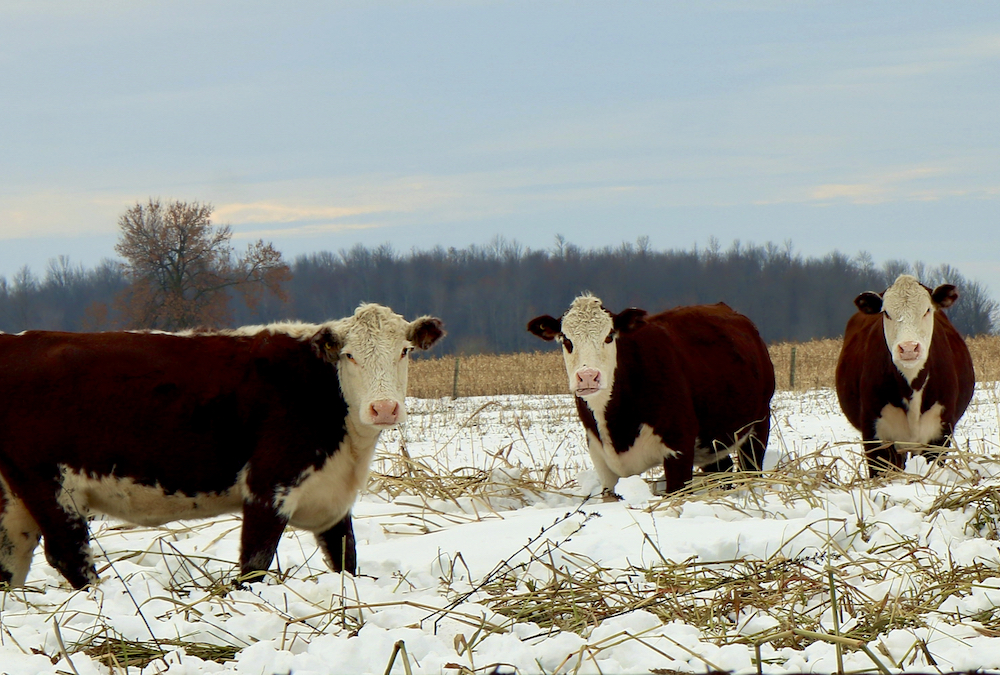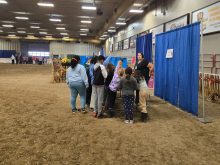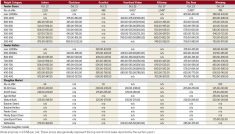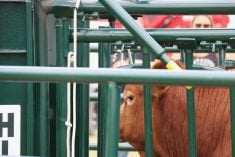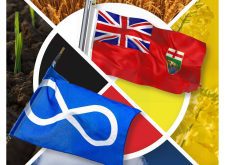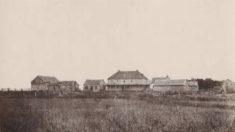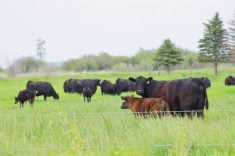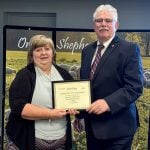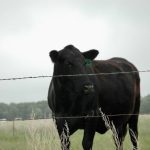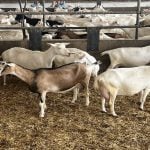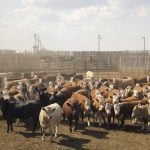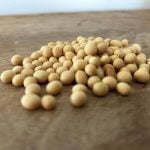It’s long ago enough that the fine details are fuzzy.
The story begins in the early days of the BSE or “mad cow” crisis. Cattle prices are hemorrhaging, with U.S. border closure the market equivalent of a jugular slash.
Interlake cattle ranchers meet at the Ashern auction mart and board a charter bus bound for the Manitoba Legislature. Aboard is Fairford First Nation farmer Derrick Gould and two ranchers from Peguis First Nation.
Read Also

Canada seventh on agri-food influence
Comparison of 19 G20 countries says Canadian agri-food needs investments, processing, action on retail consolidation to realize potential
At the legislature, as the ranchers urge lawmakers to help them, someone realizes the Indigenous men are farming on reserves. An official tells them they can’t participate in provincially funded aid. They’re the federal government’s responsibility.
“We knew there and then that we were back at square one,” Gould told the Co-operator.

He recalls going through official band channels to reach a federal representative. When they did, they were told there was no help for them.
In the next months, the federal and provincial governments would start multiple financial aid programs totalling billions of dollars. When Gould inquired about applying, he was sent to the federal government.
Eventually, he was forced to sell his cattle and get a job in Alberta to support his family.
Gould was one of dozens in a similar situation.
Because of bad information, poor communication and faulty assumptions, many First Nations farmers in Manitoba and Saskatchewan did not get the help they needed; help governments now say was available despite what individuals were told.
[RELATED] Back to the land: We used to plant hay here
[RELATED] ‘Indigenous Voices – Sharing our Agricultural History and Journey’
The worst of times
May 21, 2003: an Angus cow in Alberta tests positive for Bovine Spongiform Encephalopathy (BSE), often called “mad cow disease.”
The United States swiftly bans Canadian beef, cattle and other ruminant imports. Japan, South Korea and Taiwan follow suit.
“The sudden loss of these export markets was worth $4 billion based on 2002 sales,” wrote Michael J. Broadway in a 2008 article for The Canadian Geographer.
In Canada, the glut of animals pushed prices to catastrophic lows. In April, slaughter steers went for an average of $109 per hundredweight, Broadway wrote. By June 2003, the average price was less than $40.
The federal and provincial governments cost-shared multiple financial relief programs in hopes of keeping farmers afloat.
Between 2003 and 2006, payments from these programs made up more than 20 per cent of total farm receipts, wrote researchers David Natcher, Tom Allen and Trina Schmid in a 2011 paper.

“This is a significant contribution, which arguably stabilized the industry during this period,” the researchers wrote.
Nevertheless, impact of the crisis on producers was devastating. Many farmers downsized or lost their farms. Some, like Gould, were forced to move away to find work.
There were mental and relationship tolls.
“There is little doubt that for some families, BSE did have a devastating impact through divorce and even suicide,” said Broadway.
Farmers didn’t apply
While aid bolstered farm incomes off-reserve, most First Nations farmers in Saskatchewan didn’t even apply for help.
Natcher’s team interviewed 33 First Nations ranchers and found that only one registered for government support, receiving $2,000 through the Canada Feeder Calf Set Aside Program.
The Co-operator found a similar pattern in Manitoba.
Albert Shorting of Little Saskatchewan First Nation said that to his knowledge there were no programs offered to First Nations farmers.
“If they did offer something for help, I would have applied,” he said.
Shorting and his brother, Hector Shorting, both lost their cattle herds.
“I did that for 25 years,” Shorting said. “I wish it never happened. I still would’ve been farming. [Mad cow] created a lot of problems for the native farmers. A lot of them went bankrupt and I was one of them. I didn’t want to, but I had no choice.”
Garnet Beardy, from Lake St. Martin First Nation, heard about relief programs through a representative of the now-defunct First Nations Farm Credit program. He filled out paperwork and initially received relief money. A year later, he received notice that he’d been declared ineligible and had to return the funds.
Beardy managed to keep his farm afloat but said he’s still repaying the ‘aid’ money.
Elsie Maytwayashing, of Lake Manitoba First Nation, did not recall what programs were available or whether she and her late husband received aid funding. She indicated that between them they’d worked multiple jobs to keep the farm afloat.
Agriculture and Agri-Food Canada (AAFC) didn’t track the participation rates of Indigenous farmers in aid programs, an AAFC spokesperson told the Co-operator in a 2019 email exchange.
However, some non-BSE business risk management programs tracked “Status Indians farming on Reserves,” because these farmers required a different application process. The spokesperson said regulations prohibited them from telling the Co-operator how many “Status Indian” farmers had participated in these programs during the BSE crisis because the number was lower than 10.
Why weren’t they told?
AAFC and Manitoba provincial spokespeople told the Co-operator that a long list of BSE relief programs were open to people farming on First Nations.
Why weren’t farmers aware?
When Natcher’s team asked Saskatchewan farmers why they didn’t apply, 18 said they didn’t know about the programs.
Natcher found the Saskatchewan government had announced support through delivery of newsletters to rural post office boxes; ag media and local news; mailouts to producers who had applied to past programs; and through industry groups like the Saskatchewan Cattle Feeders Association.
This was ineffective at reaching First Nations farmers because of several factors, Natcher and his team wrote. Mailers were sent via general delivery to First Nation band offices, where mass mail, or mail without a designated recipient, tends to be discarded.
First Nations farmers historically had a low rate of participation in government programs, a factor in Manitoba too, according to a 2003 paper by University of Manitoba researcher Bret Nickels. Mailing lists wouldn’t contain many of them.
As well, few First Nations farmers were part of cattle producer groups, a situation also true in Manitoba, according to Nickels, though three farmers interviewed by the Co-operator said they’d been members.
Twelve farmers told Natcher that officials had said they were ineligible.
In some cases, when farmers asked for clarification on who could apply, government reps said they’d look into the matter and never made contact again.
Others were led to believe that since they didn’t pay personal income tax and had private herds (not owned by the band), they could not apply. Wording in program applications said “Indian Bands” could apply but it wasn’t clear whether individual farmers from those bands were also eligible.
“I don’t think they were intentionally trying to exclude First Nations,” said Natcher. “I think they were equally confused.”
Natcher, a professor at the University of Saskatchewan, teaches a course on the history of Indigenous agriculture. He said most students in his class are clueless about how land ownership and taxes work on reserves.
“The bureaucracy in trying to farm or ranch on reserve is crazy complicated,” Natcher said.
He didn’t think provincially administered BSE assistance programs were open to First Nations farms and expressed surprise when the Co-operator said they purportedly were.
It goes to show how complex these questions can be, Natcher said, and First Nations are often caught in the middle, “to the point where I think many say, ‘well, I’m not even going to bother,’” Natcher said.
It’s also conceivable that federal and provincial governments squabbled over responsibility for First Nations.
Vince Tacan, former chief of Sioux Valley Dakota Nation, and E.J. Fontaine, a business leader and former economic development advisor to the Assembly of Manitoba Chiefs, both said they’d sat in rooms with provincial and federal officials as the two sides argued over which entity would fund First Nations’ needs.
Breaking the pattern
Evidence suggests there was pattern of First Nations farmers falling through the cracks.
In his 2003 paper on the long-defunct Manitoba Indian Agriculture Program (MIAP), Nickel quoted a 2000 study: “It is evident that a very small percentage of First Nations farmers had accessed any of the [Manitoba Agriculture] safety net programs.”
Nickel cited another Manitoba program that helped farmers adapt to new technology in the late 1990s and early 2000s. No First Nations farmers or groups had accessed any of its $5 million in funding, he said.
In 2022 interviews, farmers gave the Co-operator differing views on their eligibility and access to programs like crop insurance and extension help.
“I guess, in a sense, we’re scared to even ask,” Gould said. “We’re so used to being told ‘well, this part ain’t for you.’”
What can break this pattern?
Agriculture department staff must spend more time cultivating relationships with First Nations in their regions, wrote Natcher, Allen and Schmid.
“A more ‘hands-on’ approach would contribute greatly to building trust and personal relationships,” they wrote. “At minimum, constructive change will require government to reconsider how their programs are communicated and administrated.”
The federal Department of Fisheries and Oceans (DFO) offers a good example, the researchers wrote.
The DFO worked with Indigenous communities to develop close contacts with local fishers so government personnel could communicate critical information, they wrote. First Nations were also asked to identify a fisheries coordinator to serve as a primary local contact.
Indigenous farmers would also benefit from agricultural associations to represent their specific needs, Natcher said. Some exist, for example the National Indigenous Agriculture Association, based in Saskatchewan. The Co-operator wasn’t able to find any Indigenous-specific agriculture organization in Manitoba.
Carrying on
In 1999, the First Nations Agricultural Producers survey found 73 First Nations cattle farmers in Manitoba. Interviews suggest those numbers are much lower today, and many lost their farms during the BSE crisis.
Derrick Gould isn’t one of them.
Though today he doesn’t own cattle, Gould returned from Alberta and began to piece his farm back together. Today he sells hay, raises Clydesdale horses, and has begun breaking land to experiment with crops.
Earlier this year, he told the Co-operator he keeps farming in part to show his community it can be done.
“It’s just that connection that I have, the memories that I have. The way of life. For me, that’s a real stronghold,” Gould said. “It keeps me going.”


